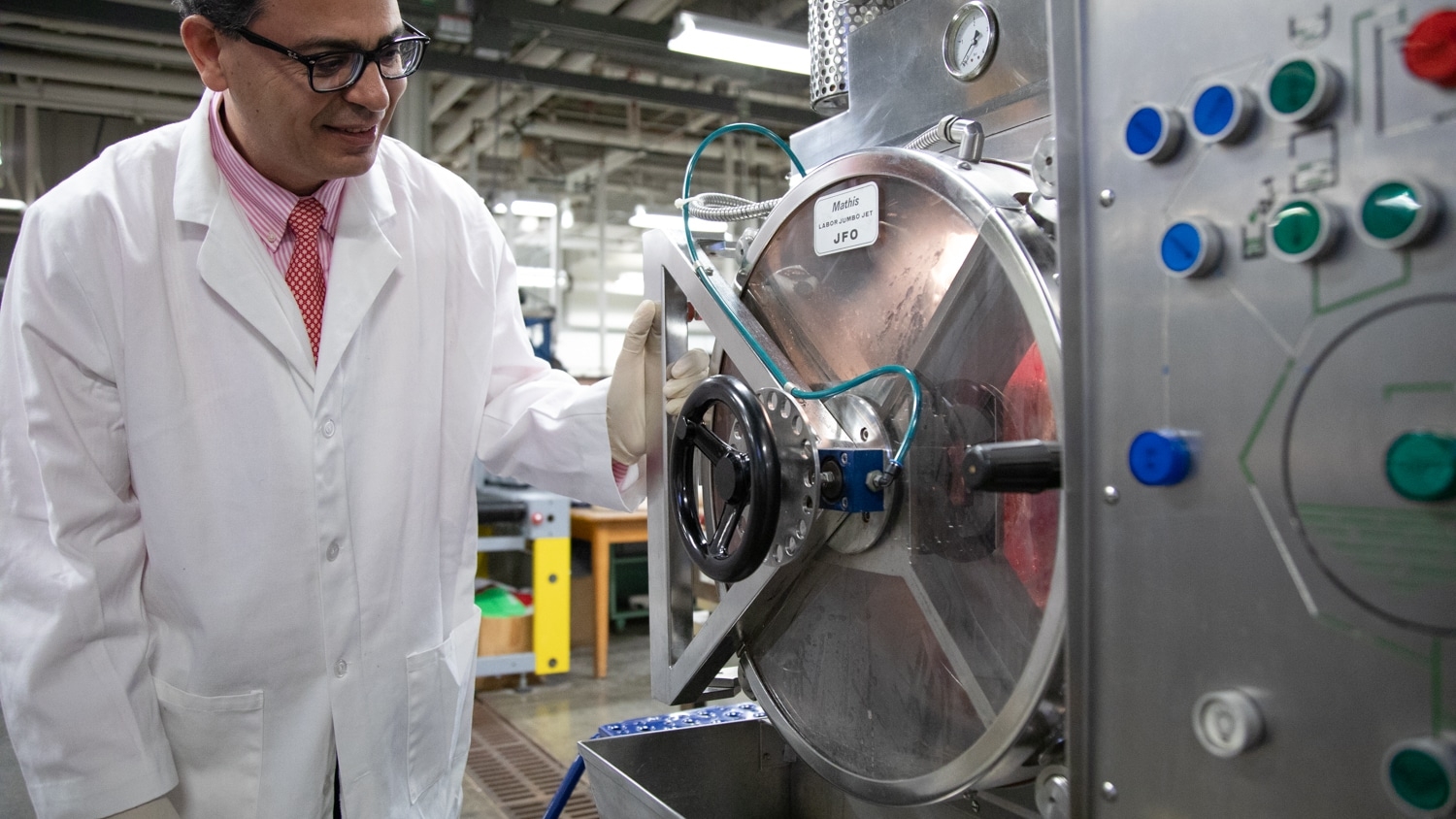TECS faculty member’s research, mentorship earns her university honors
Associate Professor Ericka Ford is now a 2023-24 University Faculty Scholar.

For Wilson College of Textiles Associate Professor Ericka Ford, there was no better place to learn she had been named a University Faculty Scholar than on a bus surrounded by the students she has dedicated her career to serving.
“The University Faculty Scholar award is designed to recognize the rising stars — the ones who are doing exceptional work in a variety of ways,” Associate Dean for Academic Affairs and Faculty Excellence Jeff Joines says.
For Ford, this takes the form of not only five licensed patents, 29 peer-reviewed publications, over $3.7 million in research awards and a Goodnight Early Career Award — but also an unwavering commitment to mentoring the next generation of textile innovators.

So when she received word of her newest accolade while leading a field trip for two student organizations, it felt right.
“It was amazing to get that honor while on a field trip to mentor students and get to inspire them with what their careers could look like,” Ford says. “It was really fitting the way it all came together.”
Innovating a greener textile future
Ford has a joint appointment with the Department of Textile Engineering, Chemistry and Science and the Nonwovens Institute, meaning the research and innovations she contributes to span a wide range of topics — from 3D-printed affordable housing to plant-based hair extensions. However, they all share a common thread: a vision for a more environmentally friendly textile industry.
“The textile industry is becoming more green,” Ford says. “We’re looking at the waste that has been produced. We’re coming up with solutions through circularity and using green materials.”
Ford groups her research into three categories: sustainable manufacturing of low-cost carbon fibers, a smaller environmental footprint for the textile fiber industry, and nanotechnologies for environmental remediation and performance textiles.
The first category aims to create carbon fiber precursors using low-cost biorenewable materials, an alternative to a process which traditionally has an incredibly high environmental impact.
“A lot of my mission when I came to NC State was to look at ways to make this process greener and more cost effective so it could be conducive to onshoring and helping to expand the applications in which carbon fibers are used,” Ford explains.
A more cost-effective carbon fiber could be used to make lighter vehicles with lower carbon-emissions or more effective equipment for generating renewable energy such as wind turbines.
The second category of Ford’s research focuses on lowering the carbon footprint of the textile industry through the use of renewable resources and recycling.
“We’re working with companies to explore more bio-based polymers,” Ford says. “We are helping to convert polymers such as cellulose, or proteins or even sodium alginate that’s found in seaweed, into fibers.”
These fibers can then be used for both fashion and industrial applications as an alternative to more synthetic fibers with higher environmental impacts.
The third category involves nanotextiles, textiles that are engineered with very small particles that give them specific properties. As part of this research, Ford worked in collaboration with NC State Crop and Soil Sciences to grow fungi on nanotextiles which allowed them to remove heavy metals from well water.
“By having these nanomaterials that we grow off the surface of textiles, we can make the textiles perform in a manner that allows them to absorb impurities or toxic chemistries from the water,” Ford explains.
In all of these projects Ford emphasizes the need for real-world scalable solutions.
“We’re not making new equipment, but we’re trying to use existing equipment and the existing U.S. manufacturing infrastructure so we can be competitive while keeping up with the challenges of tomorrow,” she says.
This ability to create change — not just on paper but also through tangible, implementable technologies — sets Ford apart from other faculty researchers.
“She’s a phenomenal researcher. She’s a peer scientist and a seeker of knowledge,” Joines says. “She’s got funding from the government, she’s got funding from research consortiums, but she also has funding from a lot of individual companies. Somebody that can deliver theoretical research but yet also deliver what companies want in that applied range is a unique individual.”
Mentorship at the forefront
While the impacts she makes with her research more than qualify her for this honor, it is Ford’s commitment to mentoring the next generation of students that truly sets her apart.
“Mentoring is a privilege,” Ford says. “It’s having an advocate, having people that believe in you and celebrate you as you meet all your milestones.”
“She spends time with her students,” Joines explains. “She’s always meeting with them and she really wants them to fundamentally understand what’s going on, not just at a surface level. She wants them to be experts so that when they go to work, whether that’s in academia or in industry, they’ll be successful.”

Ford challenges all her students to build not only a strong scientific foundation, but also a foundation in people and how they operate.
“Even as scientists and engineers, we’re still in the business of molding and mentoring people,” she says. “I want them to treat each other with respect and be collegial.”
“The best thing was, she was not just a mentor, but rather a colleague who thought of us as a team,” says Debjyoti Banerjee, who was one of Ford’s graduate assistants while working towards his Ph.D in Fiber and Polymer Science.
These values of respect and camaraderie that she instills in her students are the same ones Ford finds reflected in her own colleagues.
“It’s such a wonderful feeling at NC State,” she says. “It’s an R1 institution and yet it feels like family. People are genuinely interested in each other’s success and about doing great impactful work in the scientific community as well as in the lives of people.”

This post was originally published in Wilson College of Textiles News.
- Categories:



